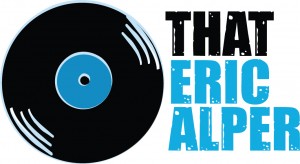Nirvana’s In Utero, released in 1993, was a full-throated rejection of the commercial polish of their last album Nevermind in favor of raw, unfiltered artistry. From Steve Albini’s abrasive production to the haunting lyrics that seemed to foreshadow Kurt Cobain’s tragic end, In Utero is a masterclass in controlled chaos. But beyond the distorted guitars and eerie cello strains, there are some wild facts about the album that even die-hard fans might not know.
1. The Album Almost Had a Controversial Title That Would Have Changed Everything
Kurt Cobain initially wanted to call In Utero I Hate Myself and I Want to Die—a phrase he often used sarcastically when people asked how he was doing. While it was meant as a joke, bassist Krist Novoselic talked him out of it, fearing that it would be misinterpreted, especially by the band’s younger fans. Instead, they landed on In Utero, a phrase taken from a poem written by Courtney Love. Had they gone with the original title, the album might have been met with even more industry resistance and controversy than it already faced.
2. Steve Albini Was Paid a Flat Fee—And Rejected Hundreds of Thousands in Royalties
Steve Albini, known for his no-nonsense attitude toward the music industry, took a flat $100,000 fee for recording In Utero and refused any royalties from sales. This decision likely cost him over $500,000 in potential earnings, but Albini stood by his principle that producers should be paid for their work upfront rather than profiting off an artist’s long-term success. Albini’s raw, hands-off production approach gave Nirvana the unfiltered sound they craved—though it sparked a major conflict with their record label.
3. The Band’s Label Thought the Album Was “Unreleasable”
When Nirvana turned in In Utero, executives at DGC Records were shocked. The album was abrasive, unpolished, and intentionally raw, a stark contrast to the radio-friendly sheen of Nevermind. Industry insiders worried it wouldn’t be commercially viable, and some even whispered that the label might refuse to release it altogether. In the end, compromise was made: Scott Litt was brought in to remix “Heart-Shaped Box” and “All Apologies” to make them more palatable for radio. Albini wasn’t thrilled about the revisions, but the album was finally greenlit.
4. A Hidden Track Was Added to the International Release as a “Devalued American Dollar Purchase Incentive”
European and Australian versions of In Utero included a hidden track: “Gallons of Rubbing Alcohol Flow Through the Strip”—a noisy, improvised jam session that Nirvana had recorded in Brazil. The band had a sense of humor about it, referring to the track in the liner notes as a “Devalued American Dollar Purchase Incentive” to justify its inclusion. This off-the-cuff recording gave international fans a unique bonus that wasn’t available in the U.S.
5. Wal-Mart and Kmart Banned the Album, Forcing Nirvana to Change the Artwork
Big-box retailers Wal-Mart and Kmart refused to stock In Utero due to its graphic back cover and the song title “Rape Me.” Wanting their music to be available to as many fans as possible—including those without access to indie record stores—Nirvana agreed to alter the album art and rename “Rape Me” as “Waif Me” for these retailers. They also swapped in Scott Litt’s remix of “Pennyroyal Tea” to make the album slightly more “radio-friendly.” While many fans bristled at the censorship, Nirvana justified the changes by emphasizing their desire for accessibility.
With In Utero, Nirvana set out to create an album that was the opposite of Nevermind—and they succeeded beyond anyone’s expectations. It’s a raw, powerful, and deeply personal record that still resonates decades later. Even though it was their last studio album, In Utero solidified Nirvana’s legacy as one of the most important and uncompromising bands in rock history.







